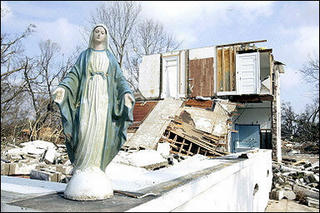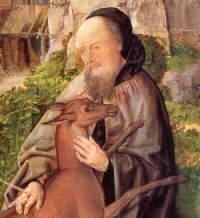
From AsiaNews.it:
Dear brothers and sisters!
“The Year of the Eucharist is now entering its final phase. It concludes in the coming month of October with the celebration of the Ordinary General Assembly of the Synod of Bishops in the Vatican, which will have as its theme: ‘The Eucharist: Source and Summit of the Life and Mission of the Church’. This special Year dedicated to the Eucharistic mystery was desired by the much-loved Pope John Paul II to reawaken in Christian people faith, awe and love towards this great sacrament, which constitutes the true treasure of the Church. With what devotion he celebrated Holy Mass, the centre of each of his days! And how much time he spent in adoring, silent prayer before the Tabernacle! Through his sickness, in the last months, he was assimilated even more in the suffering Christ. It is striking to think that at the hour of his death, he was uniting the offering of his life to that of Christ during Mass which was being celebrated at his bedside. His earthly existence ended in the Octave of Easter, right in the heart of this Eucharistic Year, in which the passage from his great pontificate to mine took place. So it is with joy that I reaffirm, right from the start of this service which the Lord has asked of me, the centrality of the Sacrament of the real presence of Christ in the life of the Church and in that of each and every Christian.
In view of October’s Synodal Assembly, the Bishops taking part will examine the ‘Instrument of Work’ prepared for the occasion. However I ask the entire ecclesial community to feel a part of this phase of immediate preparation and to participate through prayer and reflection, valuing each occasion, event and meeting. Even at the recent World Youth Day, many were the references made to the Eucharistic mystery. I recall, for example, the striking Vigil of Saturday night, 20 August, in Marienfeld, which had as its culminating moment the Eucharistic adoration: a courageous choice, which brought the gazes and hearts of the youth to look at Jesus present in the most Holy Sacrament. I also recall that during those memorable days, in some churches of Cologne, Bonn and Dusseldorf, continual adoration was held, day and night, with the participation of many youth, who could thus discover together the beauty of contemplative prayer!
I trust that, thanks to the commitment of pastors and faithful, participation in the Eucharist will be ever more assiduous and fervent in each and every community. Today in particular, I would like to exhort that the ‘Day of the Lord’, Sunday, a sacred day for Christians, be joyfully sanctified. In this context, I like to recall the person of St Gregory the Great, whose memory we celebrated yesterday in the liturgy. That pope gave a contribution of historical significance to the promotion of the liturgy in its various aspects and in particular to convenient celebration of the Eucharist. His intercession, together with that of the most Holy Mary, helps us every Sunday to live fully the joy of Easter and of the encounter with the risen Christ.”
After the Angelus prayer, the pope recalled victims of the Hurricane Katrina:
“In these days we are all saddened by the disaster wrought by a hurricane in the United States of America, especially in New Orleans. I wish to give assurance of my prayers for the deceased and for their relatives, for the injured and the homeless, for the sick, for children and for elderly people; I bless all those who are committed to the difficult work of aid and reconstruction. I have given the President of the Pontifical Council Cor Unum, Archbishop Paul Josef Cordes, the assignment of taking the testimony of my solidarity to the stricken populations.”



